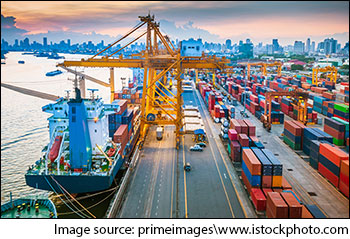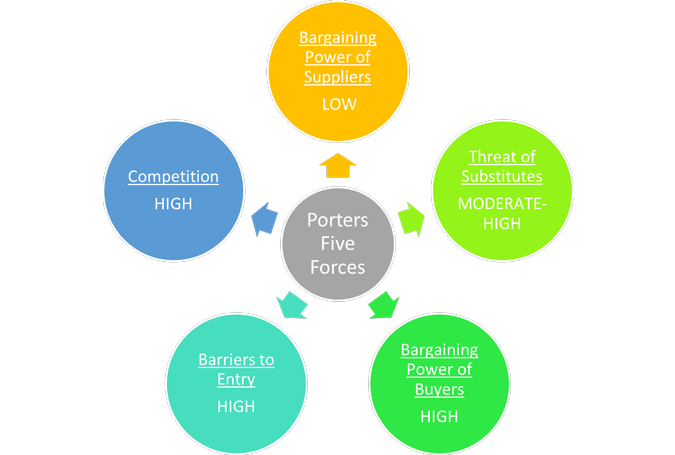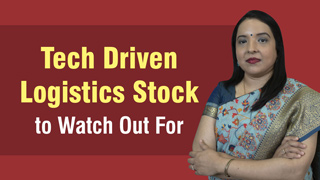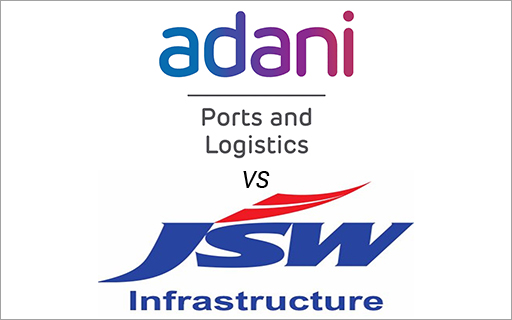- Home
- Outlook Arena
- Best Logistic Stocks in India
Best Logistic Stocks in India

Logistics is a rapidly growing sector in India.
The sector has been growing at a rapid pace and is expected to reach US$ 380 bn mark by 2025. Constant growth in online buying and thus e-commerce business, and the onset of many direct to consumer businesses have augured well for the industry in the last couple of years.
Adding to the growth are the new policies that are set to give the industry a much-needed push.
In the Union Budget 2022, the government announced the ‘Gati Shakti Plan’ with plans to improve connectivity, develop dedicated freight corridor and tech-driven warehousing.
Then there’s the draft National Logistics Policy 2020.
Although meant to cater to the emergency vaccine transportation needs in immediate future, the policy could serve a lot more. It encompasses...
- Providing unique numbers to logistics service providers to track and trace them.
- A national registry of warehouses with geo tags providing available space information.
- Co-funding intermodal transport, warehousing, and handling facilities.
- Development of silos for bulk storage on government land through public-private partnership.
If the cards are played right, the sector has the potential to create huge number of jobs for the countrymen and play a key role in driving the economy on a high wave.
The introduction of GST has already brought some efficiency to the system, which can be seen in the reduced turnaround time for trucks.
Geotagging of warehouses and encouragement of “IoT” in warehousing will be another factor that will remove inefficiencies further.
Porter’s Five Forces Analysis of the Logistics Sector in India
Porter's Five Forces is a model that identifies and analyzes five competitive forces that shape every industry.
These are barriers to entry, bargaining power of suppliers, bargaining power of customers, threat of substitutes and competition within the industry.
A change in any of the forces normally requires a company to re-assess the marketplace.
Let us have a look at how these five forces shape the logistics sector -
#1 Barriers to Entry
The most attractive segment is one in which barriers to entry are high as they restrict the threat of new entrants.
Conversely if the barriers are low, the risk of new companies venturing into a given market is high.
In the logistics sector, barriers to entry are high, as it requires high capital investment, adequate cash flows, and technical expertise and know-how.
#2 Bargaining Power of Suppliers
The bargaining power of customers is the ability of suppliers to put the firm under pressure. Suppliers may refuse to work with the firm or charge excessively high prices for unique resources.
This is low in the logistics industry, as the number of suppliers is low as there are only a few shipping companies that dominate the market.
#3 Bargaining Power of Customers
The bargaining power of customers is the ability of customers to put the firm under pressure. It is high if buyers have many alternatives and low if they have few choices.
In the logistics sector, the bargaining power of customers is high, as customers are from all over the world. Switching costs are also low as customers can switch to another company from any part of the world.
#4 Competition
For most industries, having an understanding of the competition is vital to successfully marketing a product.
The competition in the logistics industry is high, as logistics players not only face competition from domestic players but from international players as well.
#5 Threat of Substitutes
A substitute product uses a different technology to try to solve the same economic need.
This is moderate-high for solid cargo. Customers can switch to substitutes such as airlines, trucks or goods trains if there is a change in quality of service, increase in freight rates and transit time.
Porters Five Forces Analysis of the Logistics Sector in India

When to Invest in Logistics Stocks
As the demand for the logistics sector is closely linked to the economy - global and domestic, logistics stocks are usually riskier - their fortunes are prone to economic booms and busts.
For this reason, they are often called cyclical stocks. Generally considered an offensive tactic in investing, cyclical stocks can be used to generate high returns when the economy is doing well.
Therefore, the best time to buy such stocks (logistics stocks) is at the start of an economic expansion and the best time to sell them is just before the economy begins to slow down.
Key Points to Keep in Mind While Investing in Logistics Stocks
Here are some key points to take note of before you invest in logistics stocks.
#1 Crude Oil Prices
Crude oil prices have a constant effect on the logistics industry.
Rapid increases in the price for fuel can have a devastating effect on freight management companies, and a sudden fall could result in short-term boosts in profit and a surge of competition within the market to provide consumers with the lowest price.
Hence, look for companies that have the ability to pass on these costs and restructure or strategize their operations to ensure continued profit. Also, look for companies that hedge crude prices with derivative contracts.
#2 Profitability of the company
Profitability is the primary goal of all business ventures. Without profitability the business will not survive in the long run. So, measuring current and past profitability and projecting future profitability is very important.
Here’s a list of top logistics companies in India based on their consolidated net profit.
| Company Name | Net Profit (in Rs m) | Net Profit Margin |
|---|---|---|
| Adani Ports and Special Economic Zone Ltd. | 46,024 | 28.88 |
| The Great Eastern Shipping Company Ltd. | 6,297 | 17.95 |
| Shipping Corporation of India Ltd. | 6,179 | 16.68 |
| Container Corporation of India Ltd. | 4,693 | 7.19 |
| Aegis Logistics Ltd. | 3,849 | 8.31 |
| Blue Dart Express Ltd. | 3,822 | 8.67 |
| Transport Corporation Of India Ltd. | 2,652 | 8.14 |
| Gateway Distriparks Ltd. | 2,230 | 15.81 |
| Shreyas Shipping & Logistics Ltd. | 2,048 | 38.23 |
| Gujarat Pipavav Port Ltd. | 1,932 | 25.99 |
Data as of March 2022
#3 Debt to equity (D/E) ratio
A company uses both equity and debt to run a business. However, the amount of debt it uses indicates its fixed obligations. Higher the leverage, higher will be the fixed charges such as interest expense which will lower the profitability.
One must look for a debt to equity ratio of one or less than one.
Here’s a list of top logistics companies in India with a low debt to equity ratio.
| Company | Debt to Equity Ratio |
|---|---|
| Container Corporation of India Ltd. | 0.01 |
| Transport Corporation of India Ltd. | 0.04 |
| Mahindra Logistics Ltd. | 0.06 |
| Seamec Ltd. | 0.16 |
| Aegis Logistics Ltd. | 0.18 |
| Blue Dart Express Ltd. | 0.23 |
Data as of March 2022
#4 Return on Capital Employed (ROCE) ratio
Along with a low debt to equity ratio, a one must look for a high return on capital employed (ROCE).
Return on capital employed measures how much profits the company is generating through its capital. The higher the ratio, the better.
An ROCE of above 15% is considered decent for companies that are in an expansionary phase.
Here’s a list of top logistics companies in India with more than 15% in ROCE.
| Company Name | ROCE (%) |
|---|---|
| Blue Dart Express Ltd. | 53.06 |
| Shreyas Shipping & Logistics Ltd. | 30.08 |
| Lancer Containers Lines Ltd. | 25.00 |
| Agarwal Industrial Corporation Ltd. | 20.41 |
| Transport Corporation Of India Ltd. | 21.48 |
| Aegis Logistics Ltd. | 20.09 |
Data as of March 2022
#5 Valuations
Investing in stocks requires careful analysis of financial data to find out a company's true worth. However, an easier way to find out about a company's performance is to look at its financial ratios.
Being an asset heavy and cyclical business, the commonly used financial ratios used in the valuation of logistics stocks are -
Price to Book Value Ratio (P/BV) - It compares a firm's market capitalization to its book value. A high P/BV indicates markets believe the company's assets to be undervalued and vice versa.
To find stocks with favorable P/BV Ratios, check out our list of stocks according to their P/BV Ratios.
Price to Earnings Ratio (P/E) - It compares the company’s stock price with its earnings per share. The higher the P/E ratio, the more expensive the stock.
To find stocks with favorable P/E Ratios, check out our list of stocks according to their P/E Ratios.
#6 Dividend yields
There is no consistent trend of dividends across the industry, with different companies having different dividend policies.
For more details, check out our list of top logistics stocks offering high dividend yields.
Top Logistics Stocks in India
The top logistics stocks in India can immensely benefit with so many factors positively affecting the industry.
Here are the top logistics stocks in India which score well on crucial parameters.
#1 Transport Corporation of India
Check out Equitymaster’s stock screener which filters the top logistics companies in India.
List of Logistics Stocks in India
The details of listed media companies can be found on the NSE and BSE website. However, the overload of financial information on these websites can be overwhelming.
For a more direct and concise view of this information, you can check out our list of logistics stocks.
You can also check out the latest logistics sector results.
Best Sources for Information on the Logistics Sector
Ministry of Ports, Shipping & Waterways - https://shipmin.gov.in/
Indian Brand Equity Foundation Media Sector Report - https://www.ibef.org/industry/media-entertainment-india
Disclaimer: This article is for information purposes only. It is not a stock recommendation and should not be treated as such. Learn more about our recommendation services here...
![]() Multibagger Midcap Stock Secures Big Contract to Supply Critical Components to Tesla
Multibagger Midcap Stock Secures Big Contract to Supply Critical Components to Tesla
Apr 22, 2024
Tesla diversifies its supply chain with second Indian EV partnership. What next?
![]() Tech Driven Logistics Stock to Watch Out For
Tech Driven Logistics Stock to Watch Out For
Mar 28, 2024
The company caught my attention when it increased its fleet of Boeings last year.
![]() Best Ports Stock: Adani Ports vs JSW Infrastructure
Best Ports Stock: Adani Ports vs JSW Infrastructure
Feb 28, 2024
The increasing trend of containerisation, lower cost of coastal transportation, and favourable policies will drive the cargo volumes to new records and both these companies are set to benefit big time.
![]() Why Blue Dart is a Logistics Stock to Watch Out For
Why Blue Dart is a Logistics Stock to Watch Out For
Jan 31, 2024
The company caught my attention when it increased its fleet of Boeings last year.
![]() Top 10 Chemical Stocks that Could Benefit from the Booming EV Battery Supply Chain
Top 10 Chemical Stocks that Could Benefit from the Booming EV Battery Supply Chain
Jan 4, 2024
These chemical companies are vying for a major slice of the pie of the EV battery supply chain.
![]() Top 3 Stocks that Are Investing Heavily in India's EV Supply Chain
Top 3 Stocks that Are Investing Heavily in India's EV Supply Chain
Dec 15, 2023
Batteries lie at the heart of the shift from fossil fuels to clean energy. Here are three companies to bet on.
![]() 4 Stocks to Watch Out for as India Bans Computer & Laptop Imports
4 Stocks to Watch Out for as India Bans Computer & Laptop Imports
Aug 8, 2023
India recently curbed laptop and computer imports, driven by security concerns and the Atmanirbhar Bharat initiative. This aligns with India's goal to shift global supply chains.
![]() Top 5 Emerging Bluechip Stocks to Add to Your Watchlist
Top 5 Emerging Bluechip Stocks to Add to Your Watchlist
Jul 1, 2023
These five companies are all set to capitalise on the next wave of growth. Take a look...
![]() Logistics Stock Delhivery Zooms 7% Post Block Deal. More Details Inside...
Logistics Stock Delhivery Zooms 7% Post Block Deal. More Details Inside...
Jun 22, 2023
Delhivery shares hit an eight-month high after big block deal by Carlyle. Read on to know more about its FY23 performance and growth prospects.
![]() Why Aarti Industries Share Price is Falling
Why Aarti Industries Share Price is Falling
May 11, 2023
Rising crude oil prices and disruptions in the supply chain, have directly impacted the profit margin of Aarti Industries.
![]() Why the Tata-Tesla Partnership is a Game-Changer for the Semiconductor Sector
Why the Tata-Tesla Partnership is a Game-Changer for the Semiconductor Sector
Apr 15, 2024
Tesla diversifies its supply chain by making this Tata group company its strategic partner for semiconductor chips. What Next?
![]() 4 Little-Known Indian Stocks with Critical Ties to NVIDIA's Supply Chain
4 Little-Known Indian Stocks with Critical Ties to NVIDIA's Supply Chain
Feb 29, 2024
For investors looking to ride the AI and semiconductor rally, here are some under-the-radar stocks that have some connect with NVIDIA.
![]() Is Adani the New Reliance? Decoding the Rise of Adani Enterprises
Is Adani the New Reliance? Decoding the Rise of Adani Enterprises
Feb 18, 2024
Unveiling Adani's future in green hydrogen, airports, & data centre domination.
![]() FIIs are Buying these 5 Smallcap Stocks. Take a Look...
FIIs are Buying these 5 Smallcap Stocks. Take a Look...
Jan 27, 2024
These 5 stocks have caught the attention of foreign institutional investors In Q3.
![]() Bonus Shares Alert: This Smallcap Logistics Stock to Issue Bonus Shares Soon
Bonus Shares Alert: This Smallcap Logistics Stock to Issue Bonus Shares Soon
Dec 28, 2023
This logistics company is all set to allot bonus shares after its business restructuring. Find key details inside.
![]() Are the Markets in for a Perfect Storm?
Are the Markets in for a Perfect Storm?
Oct 5, 2023
Find out how to shield your portfolio from a perfect storm.
![]() TVS Supply Chain Solutions IPO: 5 Things to Know
TVS Supply Chain Solutions IPO: 5 Things to Know
Aug 7, 2023
From grey market premium to price band, here's everything you need to know about the upcoming IPO.
![]() Under Radar Stocks to Profit from India's Electronics Revolution
Under Radar Stocks to Profit from India's Electronics Revolution
Jun 22, 2023
Selecting stocks in India's electronics ecosystem must be with sufficient diligence.
![]() Under Radar Stocks to Profit from India's Electronics Revolution
Under Radar Stocks to Profit from India's Electronics Revolution
Jun 7, 2023
Select stocks in India's electronics ecosystem with due diligence.
![]() Stocks to Target the EV Battery Supply Chain
Stocks to Target the EV Battery Supply Chain
May 9, 2023
The pick and shovel plays in the EV battery ecosystem.





















